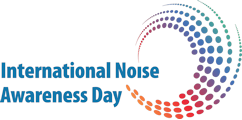common noise levels - how loud is too loud?
Continued exposure to noise above 70 dBA (adjusted decibels) over time will cause hearing loss. The volume (dBA) and the length of exposure to the sound will tell you how harmful the noise is. In general, the louder the noise, the less time required before hearing loss will occur.
If you must be exposed to noise, it is recommended that you limit the exposure time and/or wear hearing protection. A three dBA increase doubles the amount of noise, and halves the recommended amount of exposure time.
The following decibel levels of common noise sources are typical, but will vary. Noise levels above 140dBA can cause damage to hearing after just one exposure.
points of reference measured in decibels
- 0 The softest sound a person can hear with normal hearing
- 10 normal breathing
- 20 whispering at 5 feet
- 30 soft whisper
- 50 rainfall
- 60 normal conversation
- 110 shouting in ear
- 120 thunder
common noise levels (dBA)
Do your daily activities put you at risk of noise-induced hearing loss? Check out the list below and see if action is needed to protect your hearing from noise. Repeat exposure to noise at a level of just 70 dBA can cause permanent hearing issues. What can you do? Avoid noisy environments. And on those occasions where you can't distance yourself from the noise source, use hearing protection. Noise-induced hearing loss is permanent, yet entirely preventable.
Home
- 50 Refrigerator
- 50-60 Electric Toothbrush
- 50-75 Washing Machine
- 50-75 Air Conditioner
- 50-80 Electric Shaver
- 55 Coffee Percolator
- 55-70 Dishwasher
- 60 Sewing Machine
- 60-85 Vacuum Cleaner
- 60-95 Hair Dryer
- 65-80 Alarm Clock
- 70 TV Audio
- 70-80 Coffee Grinder
- 70-95 Garbage Disposal
- 75-85 Flush Toilet
- 80 Pop-Up Toaster
- 80 Doorbell
- 80 Ringing Telephone
- 80 Whistling Kettle
- 80-90 Food Mixer or Processor
- 80-90 Blender
- 110 Baby Crying
- 110 Squeaky Toy Held Close to Ear
- 135 Noisy Squeeze Toys
Work
- 40 Quiet Office, Library
- 50 Large Office
- 65-95 Power Lawn Mower
- 80 Manual Machine, Tools
- 85 Handsaw
- 90 Tractor
- 90-115 Subway
- 95 Electric drill
- 100 Factory Machinery
- 100 Woodworking Class
- 105 Snow Blower
- 110 Power Saw
- 110 Leaf Blower
- 120-125 Chainsaw, Hammer On Nail
- 120 Pneumatic Drills, Heavy Machine
- 120 Jet Plane at Ramp
- 120 Ambulance Siren
- 130 Jackhammer, Power Drill
- 130 Air Raid
- 130 Percussion Section at Symphony
- 140 Airplane Taking Off
- 150 Jet Engine Taking Off
- 150 Artillery Fire at 500 Feet
- 189 Rocket Launching from Pad
Recreation
- 40 Quiet Residential Area
- 70 Freeway Traffic
- 85 Heavy Traffic, Noisy Restaurant
- 90 Truck, Shouted Conversation
- 95-110 Motorcycle
- 100 Snowmobile
- 100 School Dance, Boom Box
- 110 Music Club, Disco
- 110 Busy Video Arcade
- 110 Symphony Concert
- 110 Car Horn
- 110-120 Rock Concert
- 112 Personal Music Player on High
- 117 Football Game Stadium
- 120 Band Concert
- 125 Auto Stereo
- 130 Stock Car Races
- 143 Bicycle Horn
- 150 Firecracker
- 156 Cap Gun
- 157 Balloon Pop
- 162 Fireworks (at 3 Feet)
- 163 Rifle
- 166/170 Handgun, Shotgun
More Noise Facts
Check out these additional resources with facts and information about the sounds that surround us while we work, play and travel.
- Occupational Noise Facts
- Noise and Music Facts (A Warning)
- Recreational Noise Facts
- Airport Noise Facts
- Tips on Filing Noise Complaints
